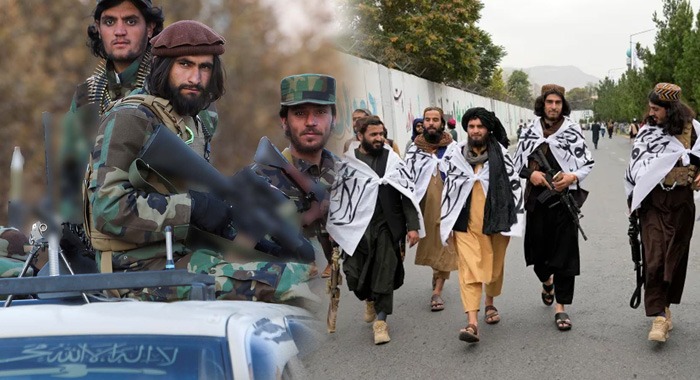When the Taliban stormed back to power in Afghanistan in August 2021, many in Pakistan’s security establishment believed the development would translate into strategic relief particularly with respect to the Tehreek-e-Taliban Pakistan (TTP), a group long accused of waging deadly insurgency from Afghan soil. The Afghan Taliban, perceived historically as “Pakistan-friendly,” were expected to rein in the TTP. Instead, the opposite has unfolded: the Afghan Taliban’s return has emboldened, empowered, and operationally unleashed the TTP like never before.
Within days of Kabul’s fall, the Afghan Taliban opened prison gates across the country, releasing hundreds of militants, including senior TTP leaders such as Maulvi Faqir Mohammad. The TTP celebrated these releases with motorcades and rallies in eastern Afghanistan, projecting a resurgence built not merely on manpower but morale. New videos and media releases have since confirmed that the TTP now enjoys unrestrained operational space inside Afghanistan training camps, propaganda production, and staging areas all function with impunity. The group wasted no time in renewing its oath of allegiance to the Afghan Taliban and presenting them as a blueprint for its own struggle against the Pakistani state.
The months that followed witnessed a dramatic uptick in violence. The TTP claimed responsibility for a wave of attacks inside Pakistan, marking the highest monthly average of operations in nearly half a decade. Yet when questioned, Afghan Taliban spokespeople have offered evasive responses, distancing themselves from the TTP by labelling it a “Pakistani problem” and advising Islamabad to seek resolution through dialogue.
Islamabad, recognising the new realities on the ground, extended olive branches in the form of offers for negotiation and general amnesty. At first, the TTP dismissed these overtures, labelling the Pakistani constitution as “un-Islamic.” However, the group did leave a door open, stating its readiness for “serious negotiations” aimed at securing the implementation of sharia in Pakistan.
By November 2021, talks had indeed begun under a short-term ceasefire, with both sides expressing cautious optimism. This time, the situation was notably different. The two primary impediments that had doomed previous negotiation efforts—namely, opposition from U.S. forces and the former Afghan government, and internal resistance from TTP hardliners no longer existed. With American troops gone and the Ghani regime toppled, external pressure on the TTP to continue fighting vanished. And this time, even senior hardliners such as co-founder Khorasani, who had previously sabotaged peace efforts in 2014, lent their support to dialogue.
Yet this window for peace is fragile. The Pakistani state cannot rely on the Afghan Taliban to crack down on the TTP. First, the TTP played a critical role in the Taliban’s post-9/11 insurgency, earning deep respect within the Afghan jihadist ecosystem. Their leaders maintain close personal and ideological ties with Afghan Taliban commanders across tribal and regional lines. Any move against the TTP risks splintering the Taliban’s own ranks and igniting internal discord. Second, the Taliban are already engaged in a high-stakes rivalry with the Islamic State-Khorasan Province (ISKP), a battle that includes defections from the TTP itself. Opening a new front against the TTP would stretch Taliban resources and unity even thinner.
From the TTP’s perspective, negotiations serve not only their strategic goals but also safeguard their allies in Kabul. A continued TTP insurgency in Pakistan would spotlight the Afghan Taliban’s failure to control transnational militancy—undermining their claims to the international community and jeopardising potential diplomatic recognition and economic engagement. The TTP knows that its presence in Afghanistan, constituting the majority of foreign fighters, is a geopolitical liability for the Taliban regime.
Nevertheless, a durable peace remains elusive. The TTP’s core objective—the imposition of a strict sharia-based order in Pakistan is fundamentally at odds with the country’s democratic constitution and pluralistic society. As long as the group clings to maximalist demands, any settlement will be inherently unstable. And for Pakistan, accepting such terms would not only compromise its sovereignty but also invite political and societal upheaval.
In the end, however, both sides are boxed in by circumstances. Military operations have failed to deliver a decisive blow to the TTP, while the Afghan Taliban’s unwillingness to mediate forcefully leaves Pakistan with limited options. A negotiated political settlement however difficult, imperfect, or protracted—appears to be the only path forward.
But time is not on Islamabad’s side. Each passing month without resolution strengthens the TTP’s operational foothold and ideological momentum. What is needed now is a clear-eyed strategy one that confronts the group’s ideological rigidity while leveraging the Afghan Taliban’s vested interest in regional stability. The alternative is a prolonged insurgency with deepening consequences for both countries and the wider region.





